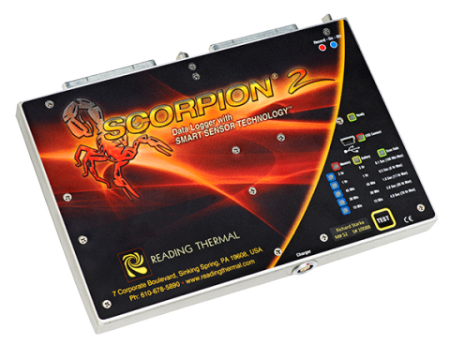The efficiency and reliability of ovens are paramount. These workhorses operate tirelessly, ensuring that each batch of baked goods meets the highest standards. However, like all machinery, ovens require regular maintenance to function optimally. One of the most effective ways to identify when an oven needs attention is temperature and humidity monitoring for commercial bakery ovens in Calamba, Philippines. Reading Thermal offers products bakeries can use to detect subtle changes that may indicate underlying issues, allowing for timely interventions and minimizing costly downtime.
The Importance of Temperature Profiling
Temperature profiling involves recording the temperature inside the oven over time to understand its performance during baking cycles. Consistent temperature is crucial for product quality, affecting attributes like texture, color, and taste. Variations can lead to underbaked or overbaked products, impacting customer satisfaction and increasing waste. Beyond product quality, temperature profiling serves as a diagnostic tool, revealing insights into the oven’s health and efficiency.
Detecting Maintenance Needs Through Temperature Data
Regular analysis of temperature-data can unveil patterns or anomalies indicative of potential maintenance issues:
- Uneven heating: If temperature profiles show significant variations across different zones of the oven, it may suggest problems such as malfunctioning heating elements or obstructions affecting air flow.
- Temperature fluctuations: Inconsistent temperatures during baking cycles can point to issues with thermostats, sensors, or control systems that regulate heat.
- Extended preheating times: An increase in the time required for the oven to reach the desired temperature might indicate deteriorating insulation or failing heating components.
- Cooling inefficiencies: If the oven takes longer than usual to cool down, it could signal problems with ventilation systems or exhaust mechanisms.
By identifying these signs early through temperature-data, maintenance teams can address issues proactively, preventing minor problems from escalating into major failures.
Leveraging Reading Thermal’s SCORPION® 2 Profiling System
To effectively monitor and analyze oven temperature, bakeries can utilize advanced tools like Reading Thermal’s SCORPION® 2 Profiling System. This comprehensive system offers real time insights into oven performance, enabling precise detection of maintenance needs.
The SCORPION® 2 Data Logger serves as the central hub, capturing data from various sensors placed throughout the oven. When paired with the Temperature Sensor Array, it provides a detailed map of temperature distribution at the product level across the conveyor. This setup allows bakeries to visualize temperature consistency and identify areas that may require attention.
In addition, the system simplifies the data collection process, allowing line workers without specialized training to handle test runs. The collected data can be downloaded and analyzed using the proprietary SCORPION® Software, offering clear visualizations and reports that aid in maintenance planning.
Learn More About the Significant Benefits of Reading Thermal Technology
Incorporating temperature-data analysis into routine maintenance schedules transforms oven upkeep from a reactive to a proactive endeavor. By consistently monitoring temperature profiles, bakeries can detect early signs of wear or malfunction, ensuring that ovens operate efficiently and products maintain their quality.
Tools from Reading Thermal – such as the SCORPION® 2 Profiling System and others – provide the precision and ease necessary for accurate temperature and humidity monitoring for commercial bakery ovens in Calamba, Philippines. It empowers bakeries to stay ahead of maintenance needs and focus on delivering exceptional baked goods to their customers. If you would like more information, please call (01) 610-678-5890 or use our online contact form.

